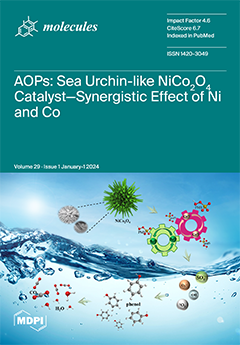A novel Mn/TiO
2 catalyst, prepared through modification with the rare-earth metal Dy, has been employed for low-temperature selective catalytic reduction (SCR) denitrification. Anatase TiO
2, with its large specific surface area, serves as the carrier. The active component MnO
x on
[...] Read more.
A novel Mn/TiO
2 catalyst, prepared through modification with the rare-earth metal Dy, has been employed for low-temperature selective catalytic reduction (SCR) denitrification. Anatase TiO
2, with its large specific surface area, serves as the carrier. The active component MnO
x on the TiO
2 carrier is modified using Dy. Dy
xMn/TiO
2, prepared via the impregnation method, exhibited remarkable catalytic performance in the SCR of NO with NH
3 as the reducing agent at low temperatures. Experiments and characterization revealed that the introduction of a suitable amount of the rare-earth metal Dy can effectively enhance the catalyst’s specific surface area and the gas–solid contact area in catalytic reactions. It also significantly increases the concentration of Mn
4+, chemisorbed oxygen, and weak acid sites on the catalyst surface. This leads to a notable improvement in the reduction performance of the DyMn/TiO
2 catalyst, ultimately contributing to the improvement of the NH
3-SCR denitrification performance at low temperatures. At 100 °C and a space velocity of 24,000 h
−1, the Dy
0.1Mn/TiO
2 catalyst can achieve a 98% conversion rate of NO
x. Furthermore, its active temperature point decreases by 60 °C after the modification, highlighting exceptional catalytic efficacy at low temperatures. By doubling the space velocity, the NO
x conversion rate of the catalyst can still reach 96% at 130 °C, indicating significant operational flexibility. The selectivity of N
2 remained stable at over 95% before reaching 240 °C.
Full article






